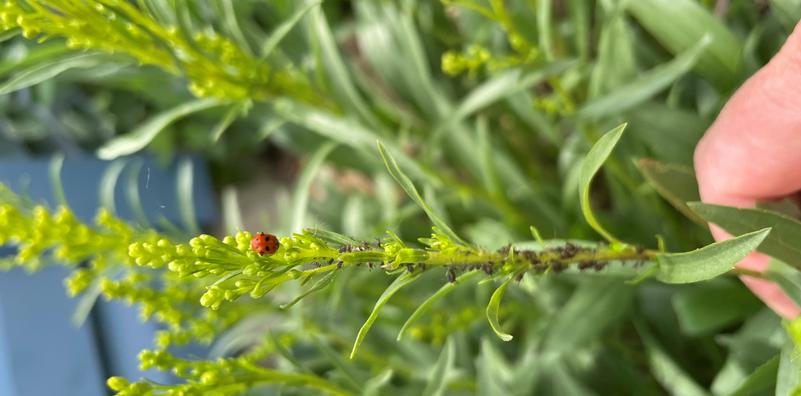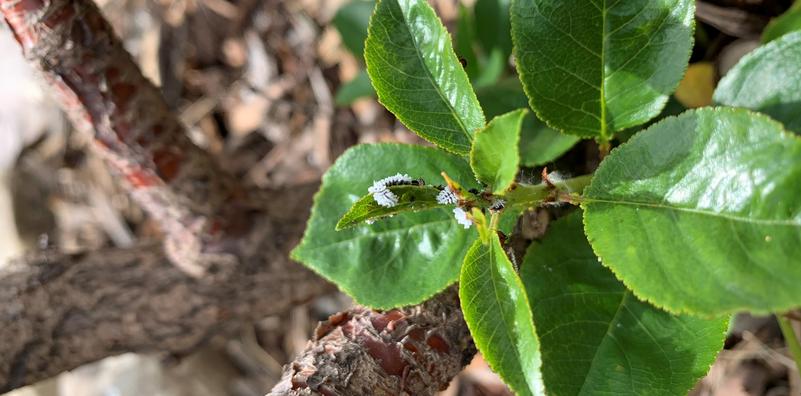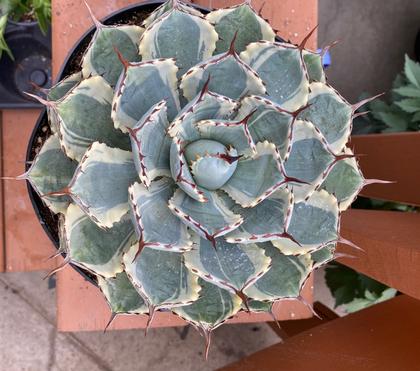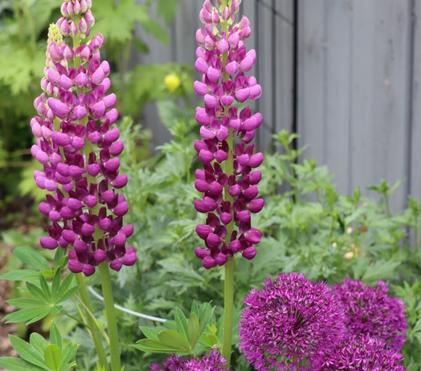Insect of the Week: Aphids
Aphids are one of the most common garden pests around, but they are by no means the worst. An infestation is generally controllable if caught early. They cause damage by sucking the sap out of tender leaves and stalks but rarely kill a plant unless it is already unhealthy or stressed.

Insect of the Week: Aphids
What a difference a couple of weeks make! When I last wrote, we were looking at our hot, dry gardens and praying for rain. The rain has now come and gone, and my small lawn is finally firm enough to walk on. The plants are lush and green with all evidence of thrips washed away.
The pests I am expecting to show up next are aphids. Green ones appear on the new growth of my plum tree without fail every year, but thus far I can see no evidence of damage. I did, however, find a population of black aphids on a single flower stalk in my patch of native low goldenrod. Poised on the very top of that stalk was a teeny-tiny lady beetle (commonly, but incorrectly called a ladybug) about 2 mm in length. When I went back to check on the low goldenrod an hour later, the lady beetle was diligently eating its way down the stem, leaving no aphids behind.
Aphids are one of the most common garden pests around, but they are by no means the worst. An infestation is generally controllable if caught early. They cause damage by sucking the sap out of tender leaves and stalks but rarely kill a plant unless it is already unhealthy or stressed. Interestingly, they give birth to live nymphs that may already be pregnant – hence the rapid and exponential population growth. Aphids are identifiable by the presence of two cornicles (tailpipes) at the end of the abdomen, but you will know that you have an infestation if you find a large population of soft black, white, red, or green insects on the undersides of leaves. There is also a woolly version which tends to affect elm and ash trees. This article from the University of Minnesota gives a particularly thorough overview of aphids.
The preferred method for physical control is a good strong spray of water, repeated every few days until most of the population has been knocked to the ground. For single or container-grown plants insecticidal soap such as Safer’s can be effective and is easily applied, but the solution must make physical contact with the insects, so that means spraying the underside of all leaves. Some people prefer to make their own pest control solutions, however much of the information readily available on the internet is not reliable, or safe. I highly recommend reading this article before spraying your plants with dish detergent or other homemade remedies.
The absolute best aphid control is already very likely in your garden. Lady beetles, lady beetle larvae, green lacewing larvae, syrphid fly larvae, and braconid wasps are all aphid predators. You may not see them, but in a chemical-free environment, they will be there. As soon as I see the aphids on my plum tree, I look on the undersides of nearby leaves for the tell-tale thin white stalks with tiny white eggs on the end. These are lacewing eggs. I look also for evidence of lady beetles. The tiny spindle-shaped yellowish eggs will be laid in small groups directly on the leaves near aphid colonies, and their larva look like small black alligators.
Encourage lady beetles and other beneficial insects to live in your outdoor spaces by planting flowers such as alyssum, yarrow, and other plants with small composite blooms. Cilantro and parsley left to bloom will attract numerous beneficial predatory flies and wasps. Naturalize a corner or areas along the edges of your yard by dedicating them as untouched spaces. This is not a license to allow noxious weeds to proliferate! Leave the leaves on your garden beds in the fall and wait for the insects to begin emerging before cleaning up plant matter in spring. And please, please, do not buy lady beetles. Native lady beetles are here, we just need to support them so their populations can increase.
There are major issues with commercially available lady beetles. Many are wild-harvested from winter hibernation locations in the Sierra Nevada mountains of California thereby stripping local ecosystems of their populations. Some are commercially raised however all are kept in a prolonged state of hibernation in refrigerated conditions and shipped to stores or homes, often dying along the way. There is concern that they may carry pathogens to their new locations and that they may be detrimental to local lady beetle populations. And do you know what lady beetles do after the package is opened? They fly away. Their post-hibernation instinct is to migrate before laying eggs or feeding.
Support local. Provide habitat for the native lady beetles and other predatory insects that are already in your garden and in your neighbourhood. They will keep aphids, thrips, and other pests in check if you let them do what they are intended to do.

Lacustrine Lady Beatle Larvae

